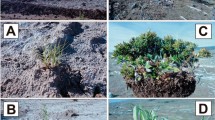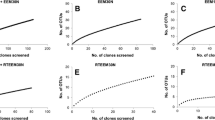Abstract
Endophytic bacteria play a crucial role in plant development and adaptation, and the knowledge of how endophytic bacteria assemblage is influenced by cultivation site and plant genotype is an important step to achieve microbiome manipulation. This work aimed to study the roots and stems of endophytic bacteriome of four maize genotypes cultivated in two regions of the semi-arid region of Pernambuco - Brazil. Our hypothesis is that the endophytic community assemblage will be influenced by plant genotypes and cultivation region. Metabarcoding sequencing data revealed significant differences in alfa diversity in function of both factors, genotypes, and maize organs. Beta diversity analysis showed that the bacterial communities differ mainly in function of the plant organ. The most abundant genera found in the samples were Leifsonia, Bacillus, Klebsiella, Streptomyces, and Bradyrhizobium. To understand ecological interactions within each compartment, we constructed co-occurrence network for each organ. This analysis revealed important differences in network structure and complexity and suggested that Leifsonia (the main genera found) had distinct ecological roles depending on the plant organ. Our data showed that root endophytic maize bacteria would be influenced by cultivation site, but not by genotype. We believe that, collectively, our data not only characterize the bacteriome associated with this plant and how different factors shape it, but also increase the knowledge to select potential bacteria for bioinoculant production.




Similar content being viewed by others
Data availability
Raw sequences were deposited in the NCBI Sequence Read Archive (SRA) and are available under Bioproject PRJNA846726.
References
Silva RCDD (2020) Fertilização Organomineral no milho em condições de Cerrado. https://repositorio.ufu.br/handle/123456789/31263
Hara S, Morikawa T, Wasai S et al (2019) Identification of nitrogen-fixing Bradyrhizobium associated with roots of field-grown sorghum by metagenome and proteome analyses. Front Microbiol 10:407. https://doi.org/10.3389/fmicb.2019.00407
Barros BGDF, Freitas ADSD, Tabosa JN et al (2020) Biological nitrogen fixation in field-grown sorghum under different edaphoclimatic conditions is confirmed by N isotopic signatures. Nutr Cycl Agoecosys 117:93–101. https://doi.org/10.1016/j.agrformet.2005.03.009
Ullah A, Mushtaq H, Fahad S et al (2017) Plant growth promoting potential of bacterial endophytes in novel association with Olea ferruginea and Withania coagulans. Microbiology 86(1):119–127. https://doi.org/10.1134/S0026261717010155
Kusale SP, Attar YC, Sayyed RZ et al (2021) Inoculation of Klebsiella variicola alleviated salt stress and improved growth and nutrients in wheat and maize. Agronomy 11:927
Yeoh YK, Dennis PG, Paungfoo-Lonhienne C et al (2017) Evolutionary conservation of a core root microbiome across plant phyla along a tropical soil chronosequence. Nat Commun 8. https://doi.org/10.1038/s41467-017-00262-8
Favela A, Bohn MO, Kent AD (2021) Maize germplasm chronosequence shows crop breeding history impacts recruitment of the rhizosphere microbiome. ISME J 15:2454–2464. https://doi.org/10.1038/s41396-021-00923-z
Zhang L, Zhang M, Huang S et al (2022) A highly conserved core bacterial microbiota with nitrogen-fixation capacity inhabits the xylem sap in maize plants. Nat Commun 13. https://doi.org/10.1038/s41467-022-31113-w
Backer R, Rokem JS, Ilangumaran G et al (2018) Plant growth-promoting rhizobacteria: context, mechanisms of action, and roadmap to commercialization of biostimulants for sustainable agriculture. Front Plant Sci 871:1–17. https://doi.org/10.3389/fpls.2018.01473
Enebe MC, Babalola OO (2018) The influence of plant growth-promoting rhizobacteria in plant tolerance to abiotic stress: a survival strategy. Appl Microbiol Biotechnol 102:7821–7835. https://doi.org/10.1007/s00253-018-9214-z
Gouda S, Kerry RG, Das G et al (2018) Revitalization of plant growth promoting rhizobacteria for sustainable development in agriculture. Microbiol Res 206:131–140. https://doi.org/10.1016/j.micres.2017.08.016
Rosier A, Medeiros FHV, Bais HP (2018) Defining plant growth promoting rhizobacteria molecular and biochemical networks in beneficial plant-microbe interactions. Plant Soil 428:35–55. https://doi.org/10.1007/s11104-018-3679-5
Bruto M, Prigent-Combaret C, Muller D, Moënne-Loccoz Y (2014) Analysis of genes contributing to plant-beneficial functions in plant growth-promoting rhizobacteria and related Proteobacteria. Sci Rep 4:1–10. https://doi.org/10.1038/srep06261
Teixeira PC, Donagemma GK, Fontana A, Teixeira WG (2017) Manual de Métodos de Análise de Solo. Embrapa, Brasília, DF Available at: https://www.infoteca.cnptia.embrapa.br/infoteca/bitstream/doc/1085209/1/ManualdeMetodosdeAnalisedeSolo2017.pdf
Unkovich M, Herridge D, Peoples M et al (2008) Measuring plant-associated nitrogen fixation in agricultural systems. Australian Centre for International Agricultural Research (ACIAR), Canberra, Australia
Araujo WL, Maccheroni JW, Aguilar-Vildoso CI et al (2001) Variability and interactions between endophytic bacteria and fungi isolated from leaf tissues of citrus rootstocks. Can J Microbiol 47:229–236
Amplicon PCR, Clean-Up PCR, Index PCR (2013) 16s metagenomic sequencing library preparation. Illumina, San Diego, CA, USA
Schloss PD, Westcott SL, Ryabin T et al (2009) Introducing mothur: open-source, platform-independent, community-supported software for describing and comparing microbial communities. Appl Environ Microbiol 75:7537–7541. https://doi.org/10.1128/AEM.01541-09
Quast C, Pruesse E, Yilmaz P et al (2013) The SILVA ribosomal RNA gene database project: improved data processing and web-based tools. Nucleic Acids Res 41:D590–D596. https://doi.org/10.1093/nar/gks1219
Fox J, Weisberg S (2018) An R companion to applied regression. Sage publications 978-1-5443-3647-3
Hammer Ø, Harper DAT, Ryan PD (2001) PAST: Paleontological statistics software package. Palaeontol Electron 4:1–9. https://doi.org/10.1016/j.bcp.2008.05.025
Segata N, Izard J, Waldron L et al (2011) Metagenomic biomarker discovery and explanation. Genome Biol 12:R60. https://doi.org/10.1186/gb-2011-12-6-r60
Shannon P, Markiel A, Ozier O et al (2003) Cytoscape: a software environment for integrated models of biomolecular interaction networks. Genome Res 13:2498–2504. https://doi.org/10.1101/gr.1239303
Faust K, Raes J (2016) CoNet app: inference of biological association networks using Cytoscape. F1000Research 5:1–14. https://doi.org/10.12688/F1000RESEARCH.9050.1
Neu AT, Allen EE, Roy K (2021) Defining and quantifying the core microbiome: challenges and prospects. PNAS 118:e2104429118
Peiffer JA, Spor A, Koren et al (2013) Diversity and heritability of the maize rhizosphere microbiome under field conditions. PNAS 110:6548–6553
Benitez MS, Osborne SL, Lehman RM (2017) Previous crop and rotation history effects on maize seedling health and associated rhizosphere microbiome. Sci Rep 8:1–13. https://doi.org/10.1038/s41598-017-15955-9
Walters WA, Jin Z, Youngblut N, Wallace JG, Sutter J, Zhang W, González-Peña A, Peiffer J, Koren O, Shi Q, Knight R, Glavina Del Rio T, Tringe SG, Buckler ES, Dangl JL, Ley RE (2018) Large-scale replicated field study of maize rhizosphere identifies heritable microbes. Proc Natl Acad Sci U S A 115(28):7368–7373. https://doi.org/10.1073/pnas.1800918115
Beirinckx S, Viaene T, Haegeman A et al (2020) Tapping into the maize root microbiome to identify bacteria that promote growth under chilling conditions. Microbiome 9:1–13. https://doi.org/10.1186/s40168-020-00833-w
Quecine MC, Silva TM, Carvalho G et al (2016) A stable Leifsonia xyli subsp. xyli GFP-tagged strain reveals a new colonization niche in sugarcane tissues. Plant Pathol 65(1):154–162. https://doi.org/10.1111/ppa.12397
Schultz CR, Brantley KM, Wallace JG (2022) The role of genetic variation in Zea mays response to beneficial endophytes. Plant Growth Regul 98:168–178. https://doi.org/10.1007/s10725-022-00842-9
Zhu K, Yuan D, Zhang XQ, Yang LT, Li YR (2018) The physiological characteristics and associated gene expression of sugar cane inoculated with Leifsonia xyli subsp xyli. J Phytopathol 166(1):45–53. https://doi.org/10.1111/jph.12659
Guo Y, Hu M, Liu LL, Yao W, Zhang MQ (2019) Activities of key enzymes in the C4 pathway and anatomy of sugarcane infected by Leifsonia xyli subsp. xyli. J Appl Microbiol 127(6):1791–1801. https://doi.org/10.1111/jam.14444
Castro-Moretti FR, Cocuron JC, Cia MC et al (2021) Targeted metabolic profiles of the leaves and xylem sap of two sugarcane genotypes infected with the vascular bacterial pathogen leifsonia xyli subsp. Xyli. Metabolites 11(4). https://doi.org/10.3390/metabo11040234
Lobo LLB, dos Santos RM, Rigobelo EC (2017) Promotion of maize growth using endophytic bacteria under greenhouse and field conditions. Aust J Crop Sci 11(12):2050–2057. https://doi.org/10.21475/ajcs.17.11.12.p2077
de Aquino JPA, de Macedo Junior FB, Antunes JEL, Figueiredo MDVB, de Alcântara Neto F, Araujo AS (2017) Plant growth-promoting endophytic bacteria on maize and sorghum1. Pesqui Agropecu Trop 47:4–10. https://doi.org/10.1590/1983-40632017v4751433
Wahyudi AT, Priyanto JA, Fijrina HN et al (2017) Streptomyces spp. from rhizosphere soil of maize with potential as plant growth promoter. Biodiversitas 19(3):1164–1171. https://doi.org/10.13057/biodiv/d180356
Abedinzadeh M, Etesami H, Alikhani HA (2017) Characterization of rhizosphere and endophytic bacteria from roots of maize (Zea mays L.) plant irrigated with wastewater with biotechnological potential in agriculture. Biotechnol Rep 19(2017):e00289. https://doi.org/10.1016/j.btre.2017.e00287
Ribeiro VP, Marriel IE, Sousa SM de, et al. (2016) Endophytic Bacillus strains enhance pearl millet growth and nutrient uptake under low-P. Brazilian J Microbiol 47(1):15-23. https://doi.org/10.1016/j.bjm.2015.10.024
Mohammed A, Influence of Streptomyces sp (2018) Kp109810 on solubilization of inorganic phosphate and growth of maize (Zea mays L.). J Appl Plant Prot 10(1):18–25. https://doi.org/10.1590/1983-40632018v4843897
Cavalcanti MIP, de Carvalho NR, Rodrigues DR, Escobar IEC, Fraiz ACR, de Souza AP, de Freitas ADS (2018) Maize growth and yield promoting endophytes isolated into a legume root nodule by a cross-over approach. Rhizosphere 13:43–49
Mugiastuti E, Suprayogi PN, Soesanto L (2018) Short communication: Isolation and characterization of the endophytic bacteria, and their potential as maize diseases control. Biodiversitas 19(5):1712–1716. https://doi.org/10.13057/biodiv/d190506
AL-Huqail AA, El-Bondkly AMA (2020) Improvement of Zea mays L. growth parameters under chromium and arsenic stress by the heavy metal-resistant Streptomyces sp. NRC21696. Int. J Environ Sci Technol 18(4):778–791. https://doi.org/10.1007/s13762-019-02324-6
Boukaew S, Petlamul W, Phitthayaphinant P, Prasertsan P (2017) Potential use of Streptomyces mycarofaciens SS-2-243 as a biofumigant to protect maize seeds against two aflatoxin producing fungi. Eur J Plant Pathol 150(1):92–107. https://doi.org/10.1007/s10658-017-1169-7
Boukaew S, Petlamul W, Prasertsan P (2018) Efficacy of Streptomyces philanthi RL-1-178 culture filtrate against growth and aflatoxin B1 production by two aflatoxigenic fungi on maize seeds. Eur J Plant Pathol 153(3):850–860. https://doi.org/10.1007/s10658-018-01629-w
Tran TM, Ameye M, Devlieghere F, De Saeger S, Eeckhout M, Audenaert K (2019) Streptomyces strains promote plant growth and induce resistance against Fusarium verticillioides via transient regulation of auxin signaling and archetypal defense pathways in maize plants. Front Plant Sci 11:3–17. https://doi.org/10.3389/fpls.2019.01236
Warrad M, Hassan YM, Mohamed MSM et al (2018) A bioactive fraction from streptomyces sp. enhances maize tolerance against drought stress. J Microbiol Biotechnol 29(11):1814–1825. https://doi.org/10.4014/jmb.1807.07011
Nozari RM, Ortolan F, Astarita LV et al (2019) Streptomyces spp. enhance vegetative growth of maize plants under saline stress. Brazilian J Microbiol 53(2):330–339
Layeghifard M, Hwang DM, Guttman DS (2017 Mar) Disentangling Interactions in the Microbiome: A Network Perspective. Trends Microbiol 26(3):220–231. https://doi.org/10.1016/j.tim.2016.11.008
Funding
The authors thank the Brazilian Council for Scientific and Technological Development (CNPq; Projetos Universal 2018, Grant Numbers 426655/2018-4 and 409519/2018-9). This work is part of the National Observatory of Water and Carbon Dynamics in the Caatinga Biome - NOWCDCB, supported by Fundação de Amparo à Ciência e Tecnologia de Pernambuco (FACEPE; APQ-0498-3.07/17 ONDACBC), CNPq (grants: 441305/2017-2; 465764/2014-2), and CAPES (grants: 88887.136369/2017-00). Part of this study was financed by FACEPE (APQ-0420-5.01/18) and Fundação Carlos Chagas Filho de Apoio à Pesquisa do Estado do Rio de Janeiro (FAPERJ). Freitas ADS and Costa CTRC are CNPq Research Productivity Scholars of CNPq (classes 1D and 2, respectively)
Author information
Authors and Affiliations
Contributions
Study conception and design: A.D.S.F, J.N.T, L.R.C.S, and C.T.R.C.C. Field experimentation: L.R.C.S, A.F.M, J.N.T, M.C.C.P.L, and A.D.S.F. Laboratory procedures: L.R.C.S, A.F.M, and M.C.C.P.L. Bioinformatic and statistical analysis: P.S.R.B, D.A.M, and C.T.R.C.C. Drafting of the manuscript: L.R.C.S, P.S.R.B, D.A.M, M.C.C.P.L, and C.T.R.C.C. Critical revision of the manuscript: all authors.
Corresponding author
Ethics declarations
Competing interests
The authors declare no competing interests.
Additional information
Responsible Editor: Jerri Zilli
Publisher’s note
Springer Nature remains neutral with regard to jurisdictional claims in published maps and institutional affiliations.
Supplementary information
ESM 1
(DOCX 13171 kb)
Rights and permissions
Springer Nature or its licensor (e.g. a society or other partner) holds exclusive rights to this article under a publishing agreement with the author(s) or other rightsholder(s); author self-archiving of the accepted manuscript version of this article is solely governed by the terms of such publishing agreement and applicable law.
About this article
Cite this article
Santos, L.R.C., Barros, P.S.d., Monteiro, D.A. et al. Influences of plant organ, genotype, and cultivation site on the endophytic bacteriome of maize (Zea mays L.) in the semi-arid region of Pernambuco, Brazil. Braz J Microbiol 55, 789–797 (2024). https://doi.org/10.1007/s42770-023-01221-w
Received:
Accepted:
Published:
Issue Date:
DOI: https://doi.org/10.1007/s42770-023-01221-w




